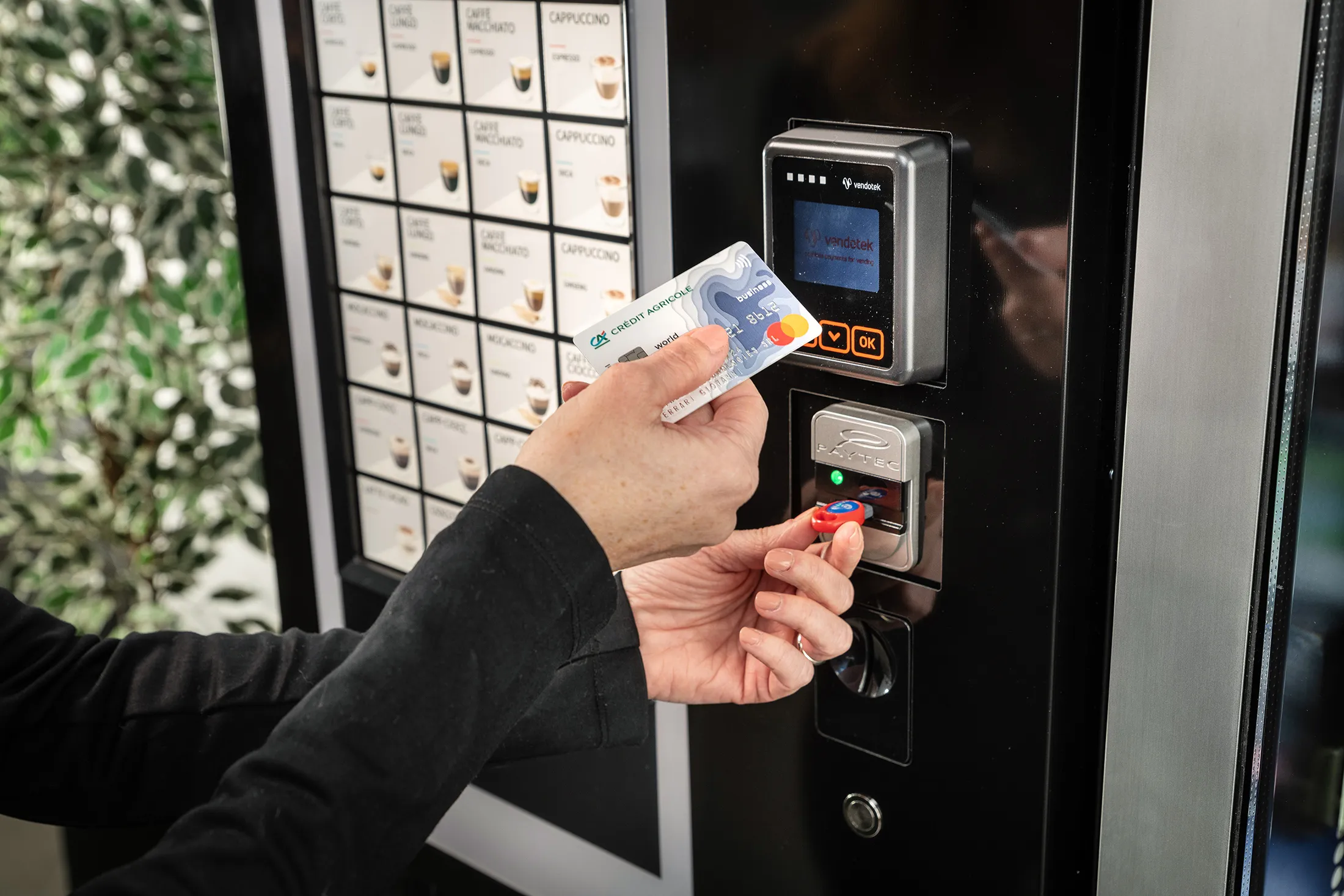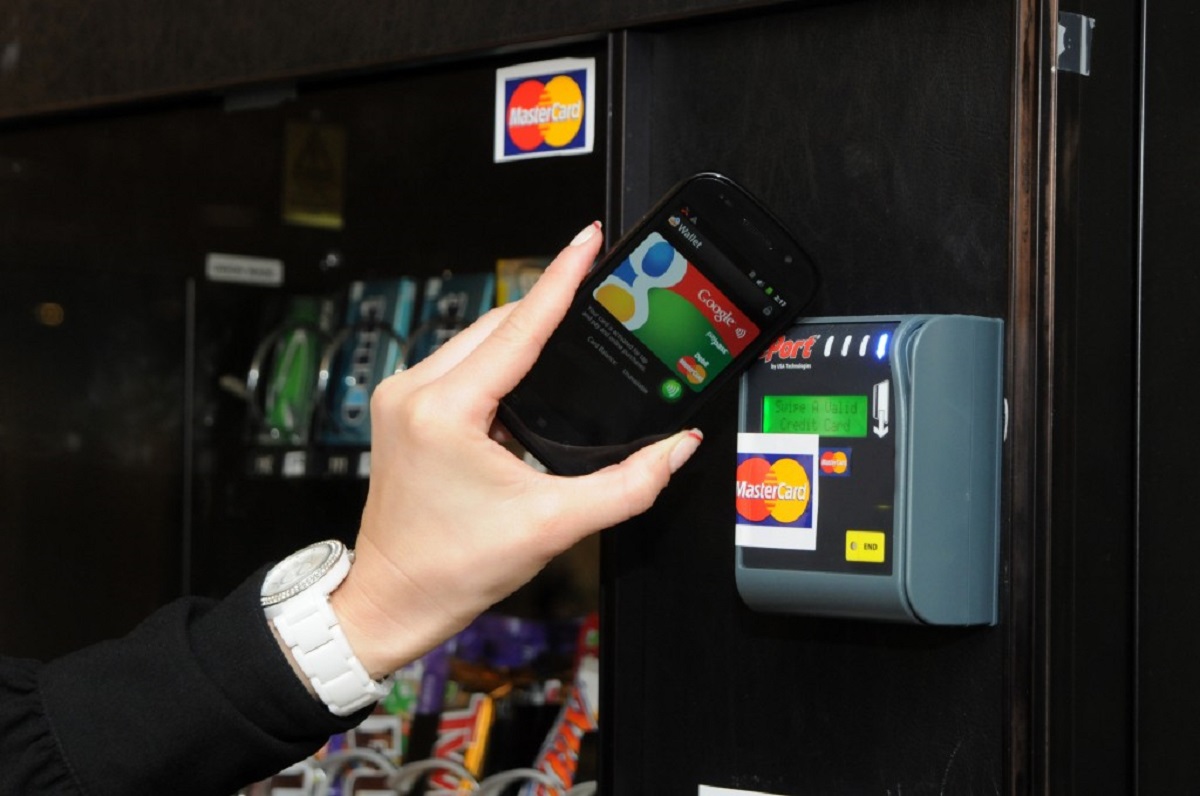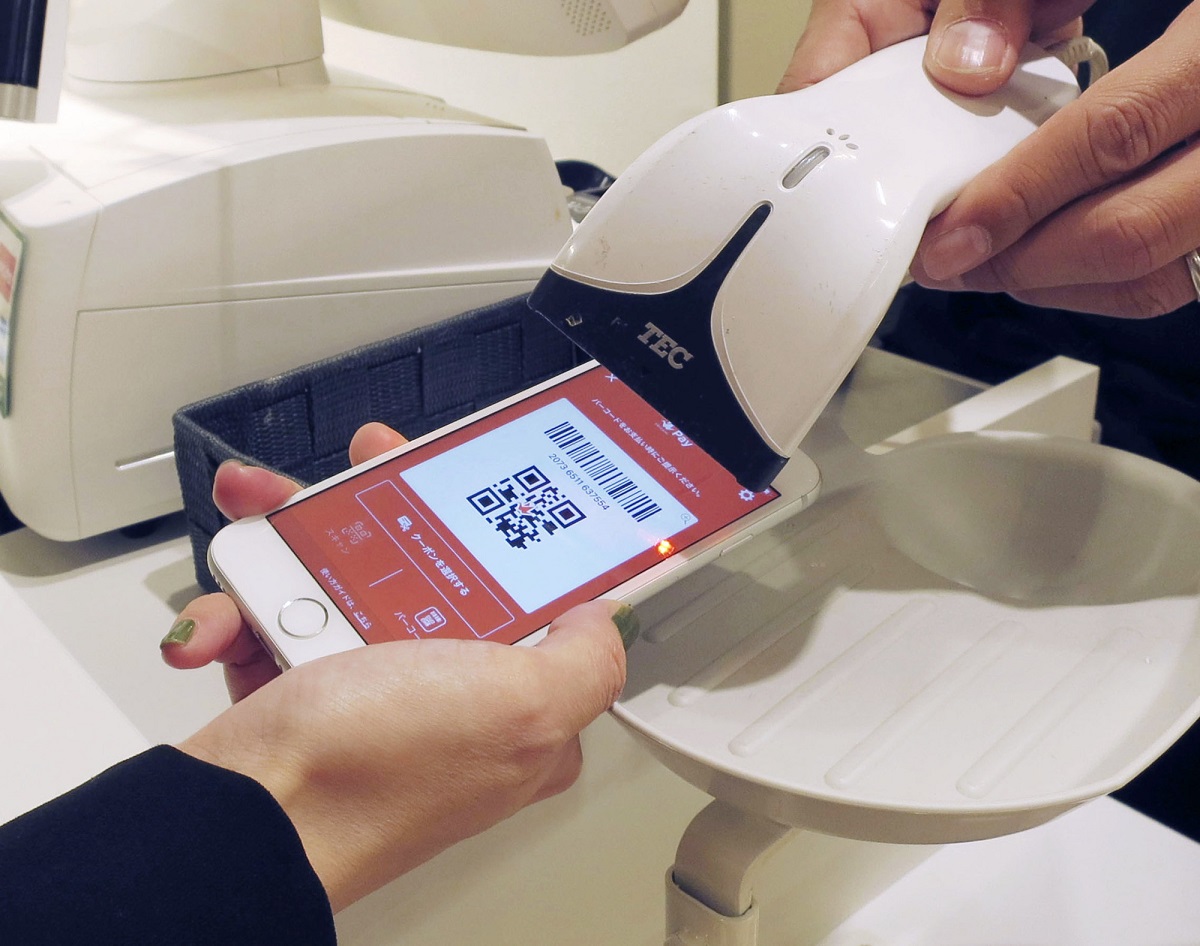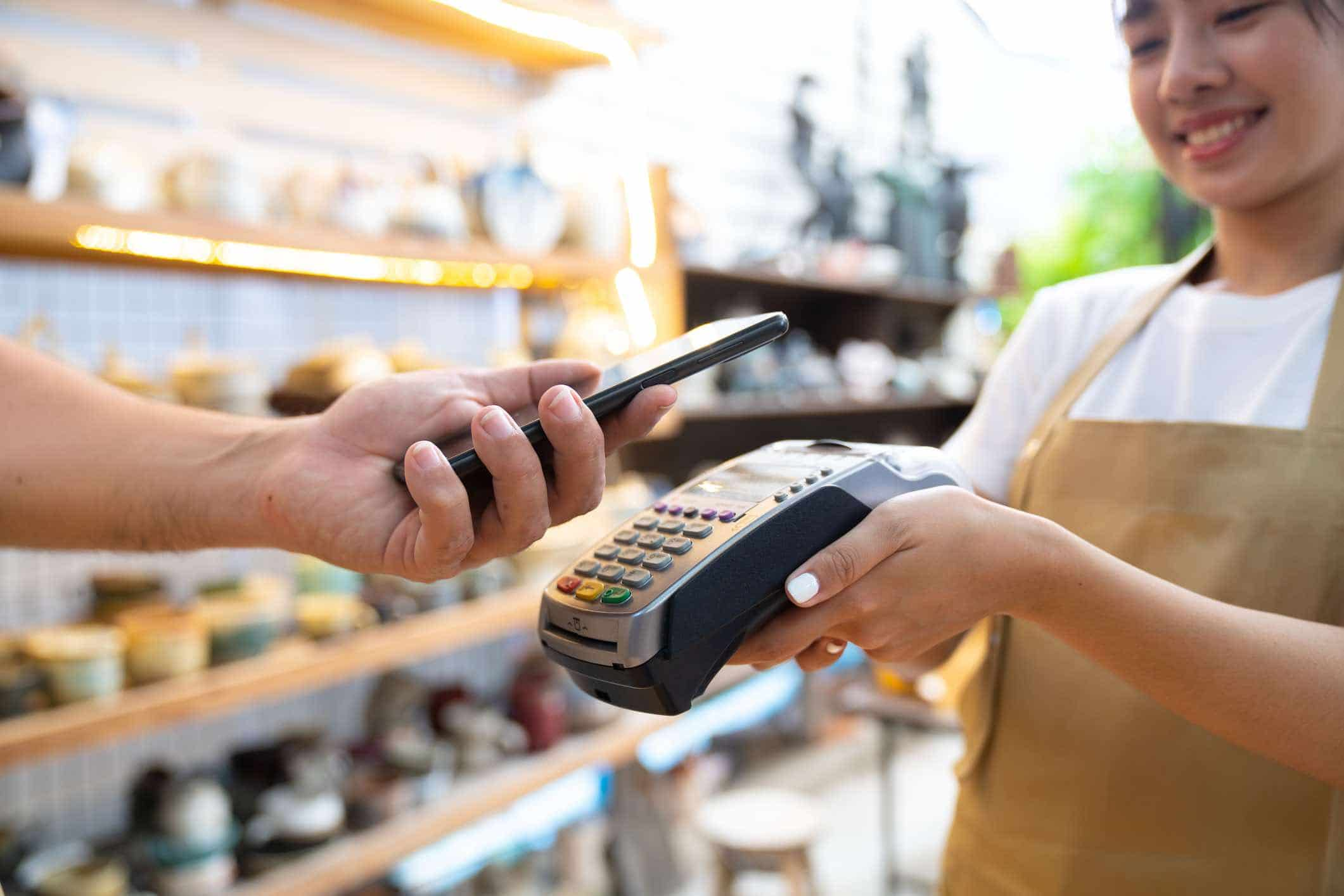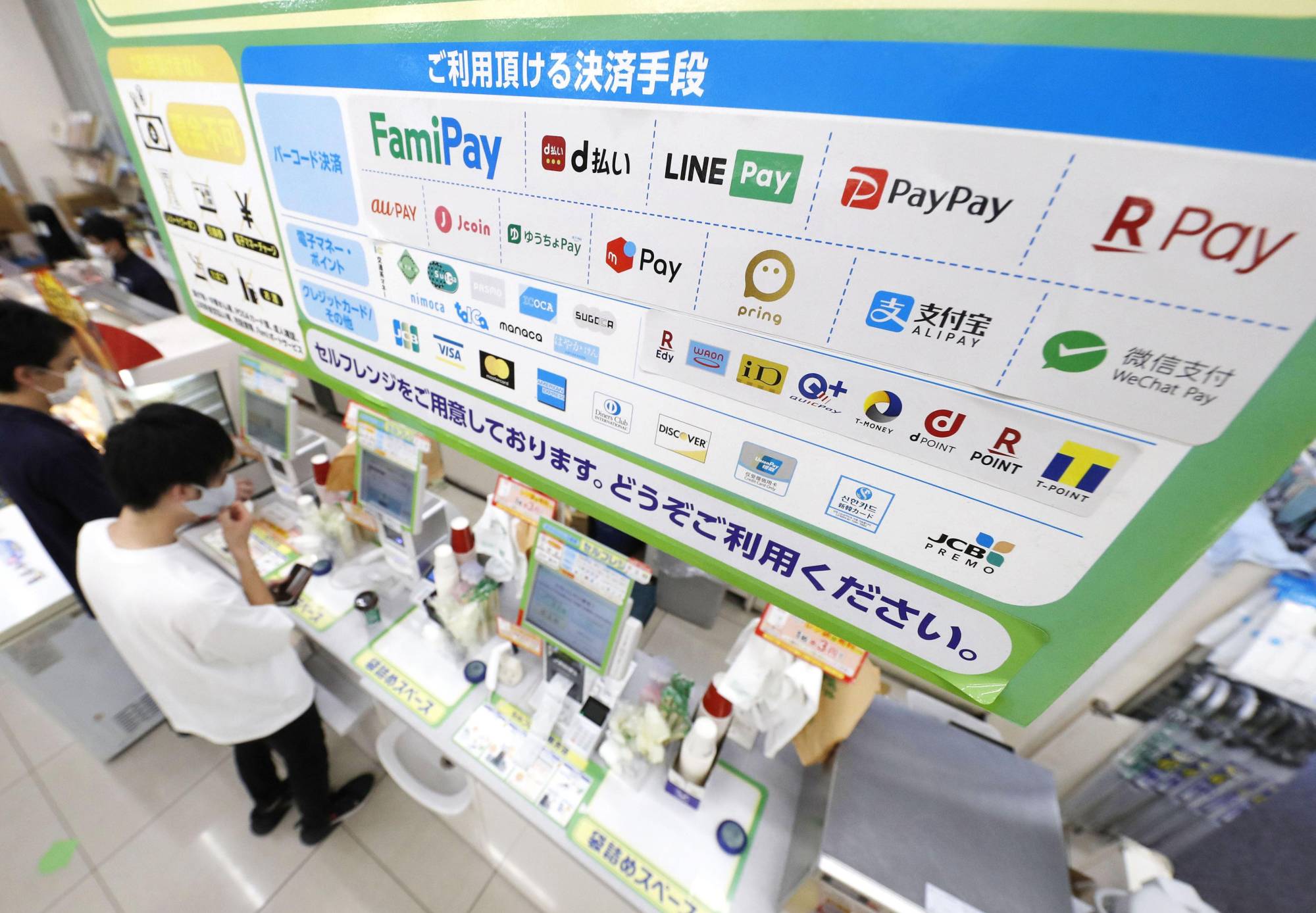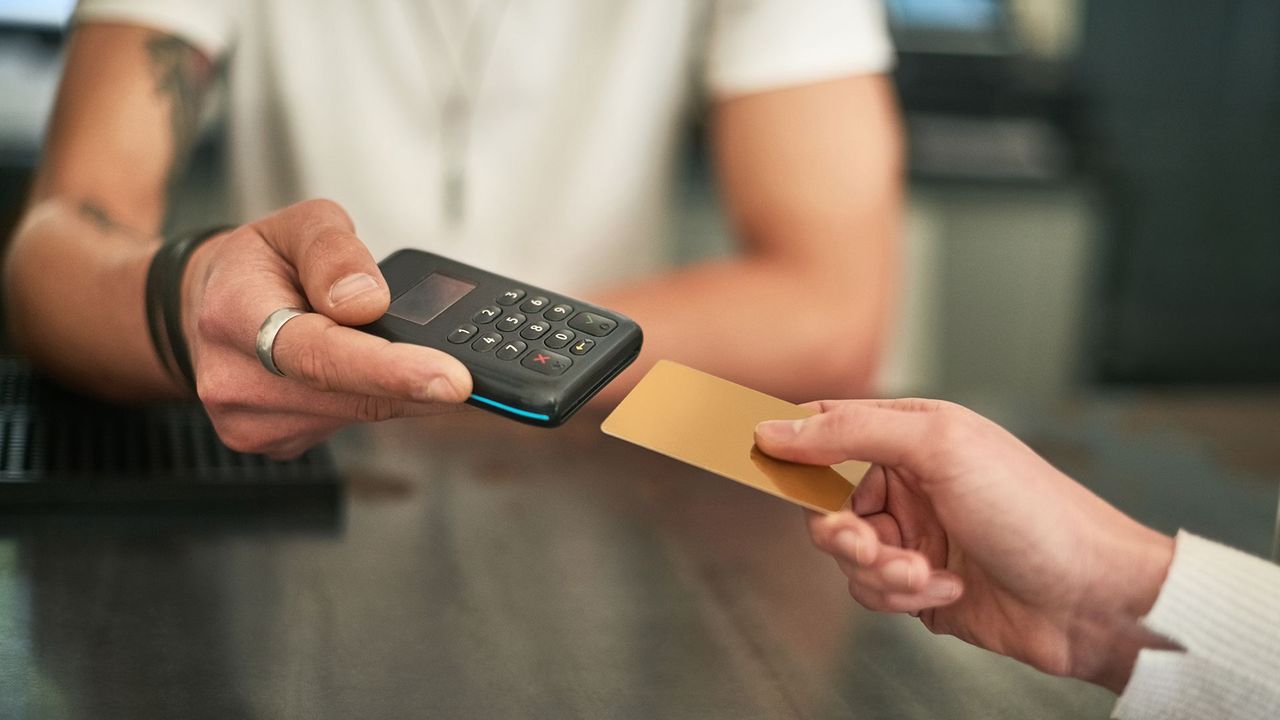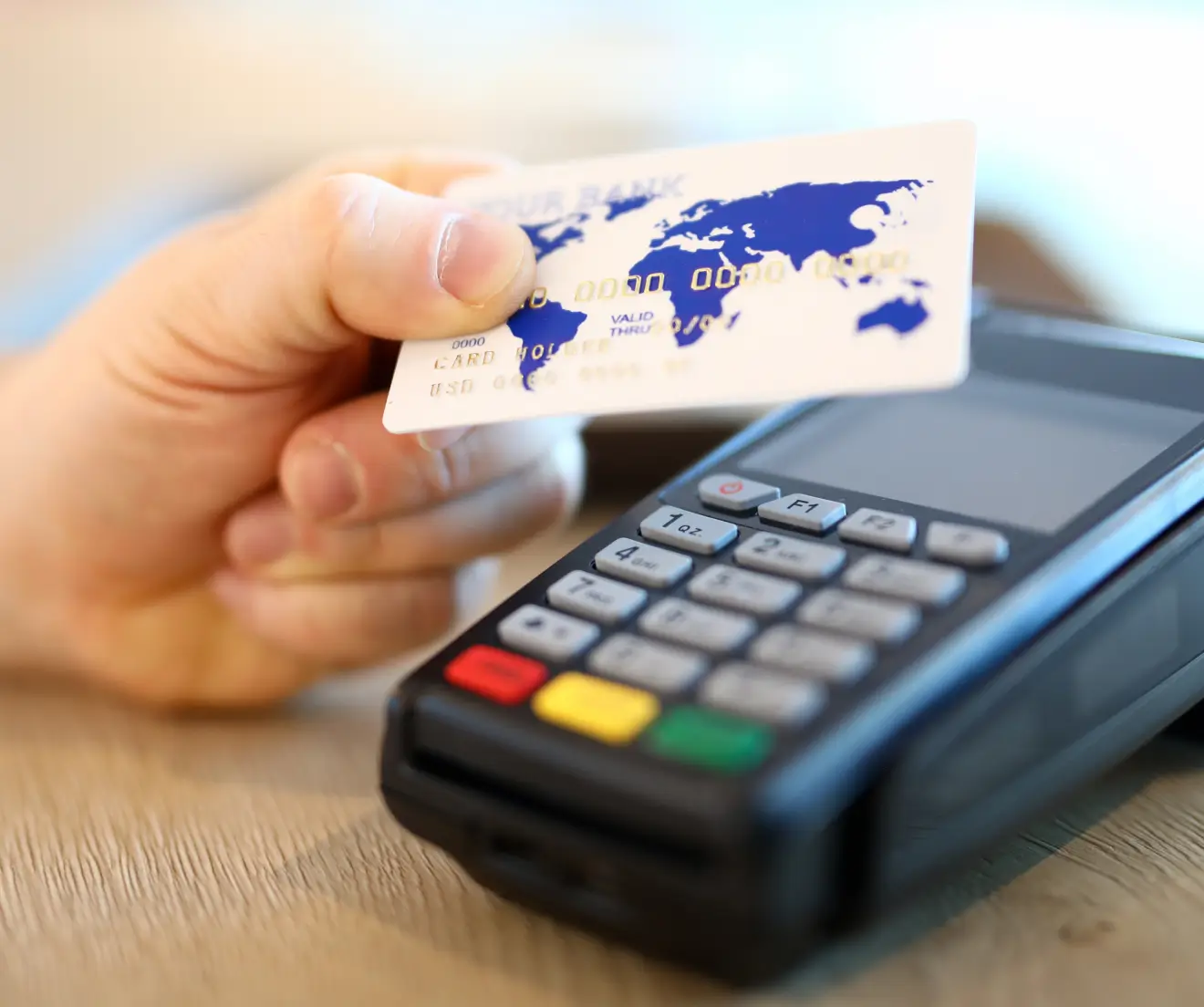Introduction
Welcome to the world of vending machine sales, where cashless payments have emerged as a game-changer. Gone are the days when inserting coins and bills were the only means to purchase a snack or drink from a vending machine. With the advent of technology, cashless vending machines have gained significant traction, revolutionizing the way people make purchases.
Today, consumers have the convenience of using various electronic payment methods, such as credit and debit cards, mobile wallets, or even scanning QR codes. These cashless options not only offer a more seamless and efficient transaction process but also cater to the growing preference for digital payments among consumers.
In this article, we will explore the various components of cashless vending machine sales and delve into the benefits and future prospects of this trend. We will also discuss the security measures taken to protect sensitive payment information and examine how the increasing popularity of cashless payments is shaping the vending machine industry.
From contactless payments to mobile wallets, the realm of cashless vending machine sales offers a world of convenience and innovation. So, let’s dive in and explore the exciting possibilities that await in this fast-evolving landscape of vending machine technology.
What are Cashless Vending Machines?
Cashless vending machines, as the name suggests, are vending machines that allow customers to make purchases without using physical cash. Instead, these machines accept electronic payment methods, such as credit or debit cards, mobile wallets, or other forms of digital payment. This evolution in vending machine technology has brought about a convenient and efficient way for consumers to make transactions.
Traditionally, vending machines only accepted coins or bills, which limited the purchasing options for customers who did not have the exact change or preferred not to carry cash. With cashless vending machines, people can simply swipe or tap their preferred electronic payment method to complete the transaction smoothly and conveniently.
These machines are equipped with advanced technology that enables them to communicate with payment service providers to securely process transactions in real-time. The integration of electronic payment systems into vending machines has rapidly expanded the payment options available, reducing barriers for customers and driving sales.
Moreover, cashless vending machines offer benefits to both vending machine operators and consumers. Operators can enjoy improved cash flow management, reduced operational costs associated with cash handling, and increased sales through impulsive purchases facilitated by electronic payment methods. On the other hand, consumers benefit from the convenience of not needing to carry physical cash, the flexibility to use their preferred digital payment method, and the assurance of secure transactions.
As technology continues to advance, the features and capabilities of cashless vending machines are evolving as well. Some models now incorporate touchless payment options, such as near field communication (NFC) technology, where customers can simply tap their smartphones or smartwatches on the machine to complete the purchase. This seamless interaction between the consumer’s device and the vending machine exemplifies the ever-improving convenience and efficiency of cashless payments.
In the next section, we will delve deeper into the benefits of cashless vending machines and how they have transformed the vending machine industry.
Benefits of Cashless Vending Machines
Cashless vending machines offer numerous advantages for both operators and consumers alike. These benefits have played a significant role in driving the widespread adoption and success of cashless vending machine sales.
One of the primary benefits of cashless vending machines is the convenience they provide to customers. With a variety of electronic payment options available, customers no longer need to carry physical cash or worry about having the correct change. Whether it’s using a credit or debit card, mobile wallet, or even a contactless payment method like NFC technology, customers can simply tap or swipe to make a purchase quickly and effortlessly.
Another advantage of cashless vending machines is the potential for increased sales. Since cash is no longer a limiting factor, customers are more likely to make impulse purchases or buy higher-priced items. By accepting electronic payments, vending machine operators can tap into a broader customer base that prefers the ease and convenience of cashless transactions, ultimately boosting their revenue.
Cashless vending machines also offer improved cash management for operators. With cashless payments, there is no need to manually count coins or bills, reducing the time and effort required for cash handling. This not only results in operational cost savings but also minimizes the risks associated with cash-related theft or fraud.
Furthermore, cashless vending machines provide valuable data insights for operators. The integration of electronic payment systems allows for the collection of transactional data, such as purchase trends, popular products, and peak hours. Operators can leverage this data to optimize their vending machine placements, adjust product offerings, and personalize promotions or loyalty programs to drive customer engagement and increase sales.
From a consumer perspective, cashless vending machines offer a heightened sense of security. With the encryption and tokenization of payment data, customers can feel confident that their financial information is protected during the transaction. This added layer of security helps alleviate concerns about theft or fraud that can arise when carrying physical cash.
Lastly, cashless vending machines contribute to a more environmentally friendly and hygienic system. By reducing reliance on physical currency, these machines minimize the use of paper bills and coins, thus promoting sustainability. Additionally, cashless transactions eliminate the need for physical contact, which is especially crucial in today’s health-conscious environment where minimizing the spread of germs is a top priority.
The benefits of cashless vending machines are clear, ranging from convenience and increased sales to improved cash management and data insights. As the next section explores the rise of cashless payments, we will see how this technological shift has transformed the way people make payments in various spheres of life.
The Rise of Cashless Payments
The rise of cashless payments has been a global phenomenon, reshaping the way financial transactions are conducted in recent years. This shift can be attributed to various factors, including advancements in technology, changing consumer preferences, and increased accessibility to digital payment options.
Mobile phones, in particular, have played a significant role in the proliferation of cashless payments. With the widespread adoption of smartphones, people now have access to a range of mobile payment apps and digital wallets, allowing them to make purchases with just a few taps on their device. The convenience and ease of use offered by these mobile payment solutions have contributed to the growing popularity of cashless transactions.
Moreover, the COVID-19 pandemic has accelerated the adoption of cashless payments. Health concerns and social distancing measures have led to a shift away from physical cash, as it is seen as potentially carrying germs and increasing the risk of transmission. In response, individuals and businesses have increasingly embraced digital payment methods as a safer and more hygienic alternative.
Financial institutions and payment service providers have also played a crucial role in promoting cashless payments. They have developed innovative solutions, such as contactless cards, mobile wallets, and peer-to-peer payment platforms, to facilitate effortless and secure transactions. The convenience and speed of these payment methods have further fueled their adoption.
In addition to convenience, cashless payments offer benefits such as transactional security and increased transparency. With robust encryption and authentication protocols in place, customers can feel confident that their financial information is protected during every transaction. Digital payment solutions also provide a clear record of transactions, making it easier for individuals to track their spending and for businesses to maintain accurate financial records.
While cash still remains a popular and widely accepted form of payment, the trend towards cashless payments is undeniable. According to a report by Research and Markets, the global cashless payments market is projected to reach a value of over $9 trillion by 2027, driven by factors such as increasing smartphone usage, rising e-commerce transactions, and government initiatives promoting digital payments.
The rise of cashless payments has had a profound impact on various industries, including vending machine sales. As we explore the components of cashless vending machine sales in the next section, we will see how this payment revolution has opened up new opportunities and transformed the vending machine landscape.
Components of Cashless Vending Machine Sales
Effective cashless vending machine sales involve several components that work together to create a seamless and secure payment experience for customers. These components include payment processors, card reader machines, and software integrations.
Payment processors play a crucial role in facilitating cashless transactions. These are third-party service providers that handle the authorization, settlement, and processing of electronic payments. When a customer makes a purchase using a credit or debit card or any other electronic payment method, the payment processor securely communicates with the customer’s bank or financial institution to verify the transaction and transfer funds for approval.
In conjunction with payment processors, vending machine operators typically install card readers on their machines. These card readers are equipped with the necessary technology to read and process various types of payment cards, including chip-enabled cards and contactless cards. When a customer inserts or taps their card at the reader, the machine transmits the payment information to the payment processor for validation and authentication, ensuring a secure and swift transaction.
Software integrations are another essential component of cashless vending machine sales. Vending machine operators need to integrate their machines with software systems that enable seamless communication between the machines, payment processors, and other relevant parties. This allows for real-time transaction monitoring, inventory management, and data analytics. Software integrations also enable operators to offer additional features, such as loyalty programs, promotional offers, or customized pricing, to enhance the customer experience and drive sales.
In recent years, advancements in near field communication (NFC) technology have further enhanced cashless vending machine sales. NFC enables contactless communication between devices, such as smartphones or contactless payment cards, and vending machines equipped with NFC readers. Customers can simply tap their NFC-enabled device on the machine to complete the payment, providing a faster and more convenient experience. NFC technology also paves the way for mobile wallet payment options, where customers can store their payment information in digital wallets on their smartphones and use them for hassle-free transactions.
Cashless vending machine sales components work together to provide efficient and secure payment solutions, allowing customers to easily make purchases without physical cash. The next section will explore the various cashless payment options available to consumers when using vending machines.
Cashless Payment Options
Cashless vending machines offer a wide range of payment options, giving customers the flexibility to choose their preferred method of payment. Here are some popular cashless payment options available when using vending machines:
- Credit and Debit Cards: Vending machines equipped with card readers can accept major credit and debit cards. Customers can simply insert their card into the reader and enter their PIN to authorize the transaction. This method is convenient for customers who prefer to pay using their existing bank cards.
- Mobile Wallets: Mobile wallets have gained significant popularity, allowing customers to store their payment information securely on their smartphones. Services like Apple Pay, Google Pay, Samsung Pay, and other mobile wallet apps enable customers to make payments by simply tapping their phones on NFC-enabled vending machines or scanning QR codes. Mobile wallets offer convenience and speed, eliminating the need to carry physical cards.
- Contactless Payment Methods: Contactless payment options, such as contactless cards and wearables, are becoming increasingly popular. These payment methods use NFC technology to enable customers to make payments by tapping their cards or devices on the vending machine’s card reader or designated contactless payment area. Contactless payments provide a quick and seamless experience, especially for small value transactions.
- QR Code Payments: QR code payments have gained traction, especially in regions where mobile payment apps are prevalent. Customers can use their smartphones to scan QR codes displayed on vending machines, linking to their preferred payment app, and authorize the payment. QR code payments are user-friendly and widely adopted, making them accessible to a broad customer base.
- Prepaid Cards or Vouchers: Some vending machines accept prepaid cards or vouchers, allowing customers to load a specific amount onto the card or voucher and use it to make purchases. These cards or vouchers can be sold or distributed by the vending machine operator, offering a convenient payment option for customers who prefer not to use their credit or debit cards.
The availability of multiple cashless payment options makes vending machines more accessible and convenient for a diverse range of customers. Whether they prefer using their existing cards, mobile wallets, or other contactless methods, consumers can enjoy a seamless and secure payment experience, encouraging them to engage with vending machines and make purchases more frequently.
In the next section, we will explore the role of NFC technology and mobile wallets in cashless vending machine transactions, as well as the advantages they offer to both customers and operators.
NFC Technology and Mobile Wallets
Near Field Communication (NFC) technology and mobile wallets have revolutionized the way customers make cashless payments, including those made at vending machines. NFC allows for contactless communication between devices, enabling smooth and secure transactions. When combined with mobile wallets, NFC technology offers a convenient and efficient payment method for customers.
Mobile wallets, such as Apple Pay, Google Pay, and Samsung Pay, are digital wallets that allow users to store their payment card information securely on their smartphones. These wallets utilize NFC technology to communicate with compatible payment terminals, including vending machines. Customers can make purchases at NFC-enabled vending machines by simply tapping their smartphones on the machine’s reader, eliminating the need for physical cards or cash.
The integration of NFC technology and mobile wallets provides several benefits to both customers and vending machine operators.
For customers, NFC-enabled mobile wallets offer convenience, speed, and security. Customers no longer need to rummage through their wallets or worry about carrying multiple cards. With just a quick tap, they can make a payment using their preferred debit or credit card securely stored in their mobile wallet. The transactions are completed swiftly, streamlining the purchasing process and saving time for busy individuals on the go.
Furthermore, mobile wallets offer an additional layer of security. The customer’s payment information is tokenized and encrypted, reducing the risk of fraud or theft. Additionally, mobile wallets often require biometric authentication, such as fingerprint or facial recognition, to authorize transactions, adding an extra level of protection.
Vending machine operators also benefit from NFC technology and mobile wallets. Incorporating NFC readers in their machines allows operators to tap into the growing trend of digital payments and attract tech-savvy customers who prefer contactless transactions. This expands the customer base and increases the likelihood of impulse purchases, leading to higher sales and revenue.
Moreover, mobile wallets enable operators to offer customized promotions and loyalty programs. By integrating their vending machines with mobile wallet apps, operators can provide personalized discounts, rewards, or exclusive offers to customers. This not only enhances the customer experience but also fosters loyalty and encourages repeat business.
It’s important to note that NFC technology and mobile wallets are not limited to smartphones. Other NFC-enabled devices, such as smartwatches or fitness trackers, can also be used for contactless payments at vending machines. This versatility expands the range of potential customers who can enjoy the benefits of cashless transactions.
As technology continues to advance, we can expect further innovations in NFC technology and mobile wallet integration, providing an even more seamless and immersive cashless vending machine experience for customers in the future.
Cashless Vending Machine Providers
Cashless vending machine providers play a vital role in enabling vending machine operators to offer seamless and secure cashless payment options to their customers. These providers offer a range of solutions that encompass hardware, software, and payment processing services, ensuring a smooth integration of cashless payment systems into vending machines.
One of the key players in the cashless vending machine industry is Nayax, a leading provider of payment solutions for unattended automated machines. Nayax offers a comprehensive suite of products and services, including card readers, mobile wallet integration, telemetry, and management software. Their solutions allow vending machine operators to accept various payment methods, track sales and inventory, and remotely manage their machines.
Another notable cashless vending machine provider is USA Technologies (USAT). USAT offers a variety of cashless payment solutions, including their ePort Connect platform. This platform provides vending machine operators with the tools necessary to accept credit and debit card payments, mobile wallet payments, and loyalty programs. USAT’s solutions also enable remote monitoring and management of machines, providing operators with valuable insights and control over their vending operations.
Additionally, Parlevel Systems offers comprehensive cashless vending solutions encompassing hardware, software, and telemetry services. Their platform allows operators to process credit and debit card payments, mobile wallet payments, and even cashless vending through QR codes. Parlevel’s advanced reporting and analytics tools enable operators to optimize their vending machine operations, analyze sales data, and make informed business decisions.
Other notable cashless vending machine providers include Vendon, Crane Payment Innovations (CPI), and Ingenico Group. These companies provide hardware components, such as card readers and touch screen interfaces, as well as payment processing services and software integrations. Their solutions offer seamless integration into vending machines, enabling operators to accept a wide range of payment options and enhance the overall customer experience.
When selecting a cashless vending machine provider, vending machine operators should consider factors such as reliability, security, compatibility with their existing vending machines, and ongoing customer support. Evaluating the features and capabilities of different providers will help operators choose the solution that best fits their specific needs and requirements.
Ultimately, cashless vending machine providers are instrumental in facilitating the transition to cashless payments, offering operators the necessary tools and support to optimize their vending machine sales and meet the evolving demands of consumers.
Security Measures for Cashless Transactions
Security is a paramount concern when it comes to cashless transactions, and robust measures have been implemented to ensure the safety and integrity of these transactions in the vending machine industry. Various security measures are in place at multiple stages of the cashless transaction process, providing peace of mind to both customers and vending machine operators.
Encryption is one of the primary security measures used in cashless transactions. When a customer initiates a payment on a vending machine, the payment information is encrypted. This process involves converting sensitive data into a secure code, ensuring that any data intercepted during transmission is indecipherable to unauthorized parties. Encryption helps prevent data breaches and protects customers’ personal and financial information.
Tokenization is another crucial security measure utilized in cashless transactions. When a customer makes a payment, their payment card information or mobile wallet credentials are replaced with a unique token. This token serves as a reference to the payment information without directly exposing sensitive data. Even if a token is intercepted, it cannot be used to retrieve the original payment details, minimizing the risk of fraud or unauthorized access.
Secure Sockets Layer (SSL) and Transport Layer Security (TLS) protocols provide additional layers of security during the transmission of payment data. These protocols establish an encrypted connection between the customer’s device and the vending machine’s payment system. SSL and TLS protocols ensure that data exchanged between the two parties remains confidential and protected from potential eavesdropping or tampering.
Authentication is an essential aspect of cashless transactions. Two-factor authentication (2FA) adds an extra layer of security by requiring users to provide multiple forms of identification before authorizing a payment. This verification process validates the identity of the customer, reducing the risk of unauthorized access to their payment accounts.
Vending machine operators also implement secure networks and firewalls to protect the infrastructure supporting cashless transactions. These measures help safeguard against unauthorized access and potential cyberattacks. Regular security audits and vulnerability assessments are conducted to identify and address any weaknesses in the system, ensuring the ongoing protection of customer payment data.
Compliance with Payment Card Industry Data Security Standards (PCI DSS) is mandatory for businesses involved in card transactions, including vending machine operators. PCI DSS ensures that operators follow stringent security practices to protect cardholder data, including requirements for network security, secure transmission of data, regular system vulnerability scans, and proper access control.
It is crucial for vending machine operators to work with reputable and certified cashless payment service providers. These providers adhere to industry best practices, maintain robust security measures, and undergo regular security audits. By selecting a trusted provider, operators can have confidence that their cashless transactions are processed securely and in compliance with industry standards.
Overall, the implementation of multiple security measures, including encryption, tokenization, secure protocols, authentication, secure networks, and PCI DSS compliance, ensures that cashless transactions at vending machines are safe and protected, instilling trust and confidence in both customers and operators.
Consumer Adoption of Cashless Payments
The adoption of cashless payments has witnessed significant growth as consumers embrace the convenience and flexibility offered by digital transactions. There are several factors driving the increasing popularity of cashless payments among consumers.
One of the primary drivers is the rise of smartphones and mobile technology. The widespread availability of smartphones has provided consumers with constant access to digital payment apps and mobile wallets. With just a few taps on their screens, consumers can make payments swiftly and securely, eliminating the need to carry physical cash or cards.
Moreover, the COVID-19 pandemic has accelerated the adoption of cashless payments. The desire to minimize contact with physical surfaces and reduce the risk of virus transmission has encouraged consumers to embrace contactless payment methods. The convenience and safety of cashless transactions have become even more compelling in the current global health crisis.
The convenience of cashless payments extends beyond in-person transactions, making it an attractive option for online and e-commerce purchases. With the surge in online shopping, consumers appreciate the speed and efficiency of digital payments, allowing them to complete transactions from the comfort of their homes or on the go.
In addition to convenience, consumers value the security and fraud protection offered by cashless payments. The encryption and tokenization of payment data, along with two-factor authentication, provide reassurance that their financial information is safeguarded during transactions. Compared to the risk associated with carrying physical cash or exposing sensitive card details, digital payments offer enhanced security.
Loyalty programs and rewards have also played a role in driving consumer adoption of cashless payments. Many payment apps and mobile wallets offer incentives such as cashback rewards, discounts, or exclusive offers for using their services. These benefits encourage customers to make a habit of using cashless payments, further solidifying their adoption.
Consumer education and awareness campaigns have also contributed to the adoption of cashless payments. Financial institutions, payment service providers, and governments have actively promoted the benefits of digital payments, highlighting the convenience, safety, and ease of use. These initiatives have helped familiarize consumers with the various options available and dispel any concerns or misinformation about cashless transactions.
While cashless payments have gained traction, it is important to note that there are still segments of the population, particularly older individuals or underserved communities, who may face barriers to adopting digital payments. Issues such as a lack of access to smartphones or internet connectivity, unfamiliarity with technology, or reliance on cash for cultural or personal reasons may impact the adoption rates in these groups.
However, overall, the trend towards cashless payments is clear, as consumers across various demographics and geographical regions increasingly embrace the convenience, security, and speed offered by digital transactions.
In the final section, we will explore the future prospects and potential challenges of cashless vending machine sales.
Future of Cashless Vending Machine Sales
The future of cashless vending machine sales looks promising, with continued advancements in technology and changing consumer behaviors driving the evolution of this industry. Here are some key factors that will shape the future of cashless vending machine sales:
1. Technological Innovations: As technology continues to advance, we can expect to see more innovative features and capabilities in cashless vending machines. This may include enhanced user interfaces, integration with voice assistants and artificial intelligence, digital signage for targeted promotion, and even biometric authentication for secure payments.
2. Expansion of Mobile Wallet Adoption: Mobile wallets are gaining prominence, and we will likely see a rise in their usage for cashless vending machine transactions. With the increasing acceptance of mobile payment apps and the integration of NFC technology, more consumers will rely on their smartphones and wearable devices as their preferred payment method, driving the growth of mobile wallet usage.
3. Personalization and Data Analytics: Cashless vending machine sales will increasingly leverage data analytics to gain insights into customer preferences, purchasing patterns, and trends. Vending machine operators can use this data to tailor their product offerings, promotional strategies, and loyalty programs, providing a more personalized and engaging experience for customers, ultimately leading to increased sales.
4. Enhanced Connectivity: With the implementation of 5G technology and the expansion of IoT (Internet of Things) networks, vending machines will have improved connectivity, allowing for real-time monitoring, remote management, and seamless integration with cashless payment systems. This will enable operators to efficiently manage and maintain their machines, optimize inventory, and respond quickly to customer demands.
5. Contactless and Touchless Experiences: The ongoing global health crisis has accelerated the demand for contactless and touchless experiences. Cashless vending machines will continue to play a role in providing hygienic and convenient options for customers. Integration with mobile wallets, QR code payments, and other contactless technologies will become the norm, with minimal physical interactions required for transactions.
6. Further Adoption in Emerging Markets: While cashless payments have gained significant traction in developed markets, emerging markets are likely to witness an increase in adoption as well. Factors such as the growing smartphone penetration, expanding e-commerce market, and government initiatives to promote digital payments will contribute to the rise of cashless vending machine sales in these regions.
7. Sustainability and Green Initiatives: There is a growing emphasis on sustainability and eco-friendly practices across industries. Cashless payments align with this trend by reducing the reliance on paper currency and minimizing the use of resources associated with cash printing. As environmental concerns continue to gain prominence, vending machines that offer cashless payment options will be perceived as more sustainable and environmentally friendly.
The future of cashless vending machine sales is driven by technological advancements, changing consumer preferences, and the need for convenience, safety, and efficiency. As the industry continues to innovate and adapt to evolving trends, we can expect cashless vending machines to become a ubiquitous presence, offering seamless and personalized experiences to customers worldwide.
Conclusion
The era of cashless vending machine sales has revolutionized the way people transact and interact with vending machines. The convenience, speed, and enhanced security offered by cashless payments have driven the widespread adoption of this technology among consumers. From accepting credit and debit cards to integrating mobile wallets and leveraging contactless technologies, cashless vending machines provide customers with a seamless and efficient purchasing experience.
Key components, such as payment processors, card readers, software integrations, and secure networks, work in harmony to ensure the smooth operation of cashless vending machine sales. These components, coupled with encryption, tokenization, and authentication, provide the necessary safeguards to protect customer payment data and instill trust in the cashless transaction process.
The future of cashless vending machine sales is bright, with continued technological advancements and changing consumer behaviors driving innovation in the industry. As mobile wallet adoption expands, technological features evolve, and connectivity improves, vending machines will deliver personalized and data-driven experiences to customers.
Furthermore, the global health crisis has amplified the demand for contactless and hygienic transactions. Cashless vending machines have addressed this need by offering touchless payment options and minimizing physical interactions, ensuring the safety of both customers and operators.
Cashless vending machine providers play a pivotal role in the ongoing success of cashless vending machine sales. By offering comprehensive solutions, including hardware, software, and payment processing services, they enable operators to seamlessly integrate cashless payment options into their vending machines and tap into the growing consumer preference for digital transactions.
All in all, with the rising popularity of cashless payments, combined with advancements in technology and shifting consumer behaviors, cashless vending machine sales will continue to thrive. As the industry continues to innovate and adapt to changing demands, the future promises exciting opportunities for vending machine operators to enhance customer experiences and drive revenue through the convenience and efficiency of cashless transactions.







